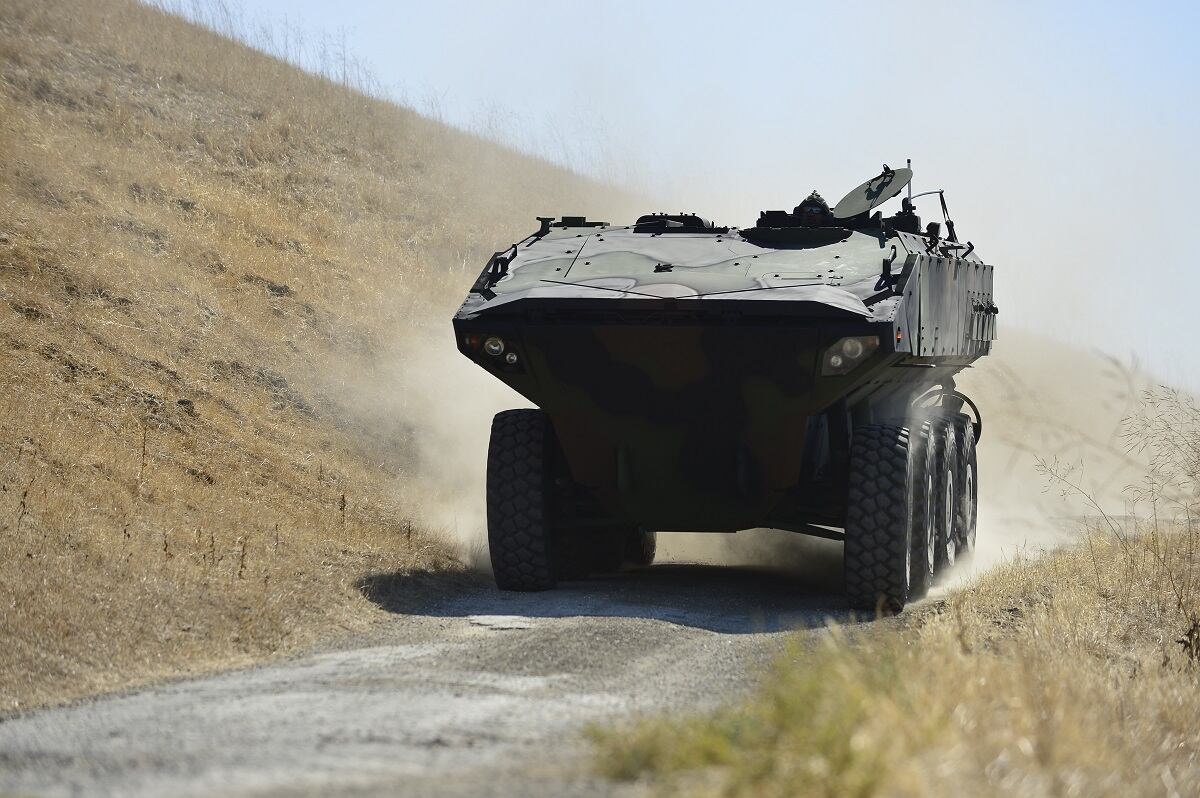WASHINGTON — The U.S. Marine Corps has killed its Amphibious Assault Vehicle survivability upgrade program as it turns focus to the future and aligns with the new National Defense Strategy.
The service executed a stop work order Aug. 27 to SAIC, which was under contract to perform survivability upgrades to the 40-plus-year-old AAV fleet to include new tracks to enhance mobility as well as increased underbelly armor, blast-mitigating seats, a new engine and transmission along with an assortment of suspension upgrades.
The order “allows [SAIC] to finish the four production control modules that they were building,” Marine Corps spokesman Manny Pacheco said in a statement sent to Defense News. “They have delivered three and we expect the fourth soon.
“All other work will be terminated.”
SAIC has already delivered 10 AAV Engineering and Manufacturing Development versions of the vehicle to the Marines.
The Marine Corps has spent approximately $125 million to date on the AAV Survivability Upgrade, or SU, program and has now identified approximately $96 million in fiscal 2019 funding that the Defense Department and Congress will have to reprioritize, according to Pacheco.
The idea was to keep the vehicles alive into 2035 as the Marine Corps begins to bring online its new Amphibious Combat Vehicle, or ACV, that would slowly replace the AAVs over time.
But in an effort to “better align programs with the National Defense Strategy and congressional guidance to reduce investment in legacy programs and focus buying power on modernization, the Marine Corps made the decision to divest the AAV SU program,” Pacheco said.
The AAV does not “meet the needs of modern Marine amphibious forcible entry operations,” he said. “Rather than continue to invest in that vehicle that, even in upgraded form, will not provide adequate maneuverability, survivability, or ship-to-shore performance, the Marine Corps believes these funds would be better used elsewhere to support modernization initiatives across the force.”
The decision was also motivated by the expected mobility and survivability demonstrated by the ACV, along with planned lethality, “which will ensure that our Marines have the firepower and survivability to succeed in the future fight,” Pacheco added.
“Reinvestment decisions will be made separately and focus on increasing lethality of the force,” Pacheco explained. “AAV SU divestiture assets may allow us to procure underfunded initiatives in the AAV modification line such as Tactical Communication Modernization and a Remote Weapons Station.”
The stop work order serves as another blow to SAIC, which lost in June a head-to-head competition to build the Marines’ new ACV. BAE Systems was selected to build 30 low-rate initial production vehicles expected to be delivered by the fall of 2019, valued at $198 million.
RELATED

The total value of the contract with all options exercised is expected to amount to about $1.2 billion.
But the AAV isn’t likely the only program on the chopping block.
Defense leadership has been saying since last year that it can’t continue to invest in older systems while also focusing on new programs; they have admitted there will come a time when those legacy systems will have to be scaled back to make way for more a modernized capability. The FY20 budget documents and five-year plans from each service have been submitted to the Office of the Secretary of Defense, and it’s likely more examples of efforts to reprioritize funds from old to new platforms will emerge.
The Army has already terminated the Bradley A5 upgrade program in favor of the new Next-Generation Combat Vehicle. That upgrade would have included improvements like a third-generation FLIR, a cross-platform laser pointer, color day camera and an improved laser range finder.
And in the FY19 spending bill conference report, the Bradley A4 program took a $160 million hit due to a “revised acquisition strategy.”
While SAIC appears to have lost out both on the ACV program and now the AAV SU effort with the Marine Corps, the company is now setting its sights — building off its experience as an effective platform integrator — on the U.S. Army’s Mobile Protected Firepower program.
The company, partnered with ST Kinetics and CMI Defence, will integrate CMI’s Cockerill 3105 turret onto an ST Kinetics next-generation armored fighting vehicle chassis as its offering in the Mobile Protected Firepower competition that kicked off with the release of a request for proposals in November 2017.
And the company is working on some efforts related to the Next-Generation Combat Vehicle as well, SAIC’s CEO, Tony Moraco, told Defense News in a recent interview.
Jen Judson is an award-winning journalist covering land warfare for Defense News. She has also worked for Politico and Inside Defense. She holds a Master of Science degree in journalism from Boston University and a Bachelor of Arts degree from Kenyon College.





